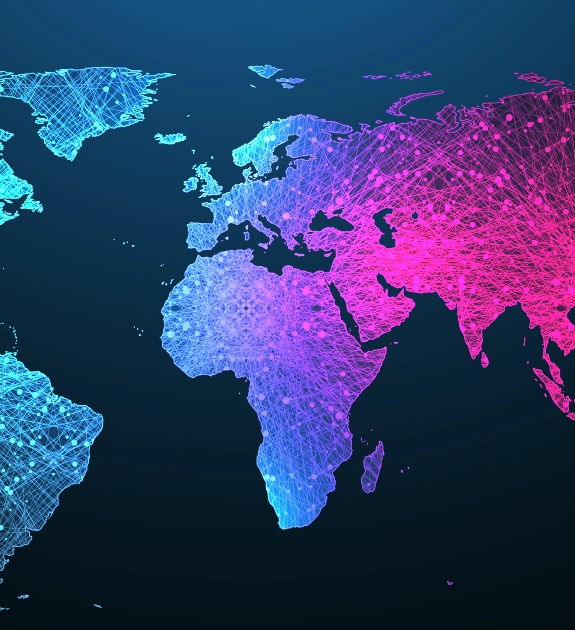Catalyzing Broadband Deployments Around the World
Although some governments globally had begun to develop national broadband deployment plans, the coronavirus pandemic was a wakeup call for many nations, prioritizing the need to fund universal broadband deployments.
Governments around the world have recently announced major broadband deployment initiatives, setting aside the equivalent of billions of US dollars ($) to stimulate action.
In Europe there are a wide range of fiber deployments, with countries like Spain with nearly 90% fiber penetration and other countries like the United Kingdom and Germany under 20%.

While many countries in South America, Africa and Southeast Asia are significantly under-penetrated by fiber, many are now leapfrogging to next-generation wired and wireline networks. In countries like South Korea and Japan where fiber access and 5G predominates, they are already making plans for next-generation technologies.
There is no question that nations around the world have come to recognize broadband’s arrival as an essential service on par with electricity and water. That said, there are many ways nations are stimulating deployments, ranging from tax incentives to formal broadband stimulus initiatives and grant dollars.
Europe is Aggressively Utilizing Broadband Stimulus Programs to Drive Fiber Growth
Although some countries in Europe like Spain have already aggressively deployed fiber to more than two-thirds of their nation’s homes. This is extremely high compared to countries like the UK and Germany at less than 20% fiber deployment.
Many EU nations (and adjacent) have decided to allocate stimulus dollars to encourage rapid fiber buildouts. Because of these incentives, it is anticipated that countries like the U.K. and Germany will see increases of 1662% and 1150% respectively, in homes passed by fiber by 2026 (estimates by IDATE and the FTTH Europe).
Currently announced broadband initiatives in the UK and EU countries:
- UK – Project Gigabit ($8 Billion (US))
- Germany – BVMI ($14 Billion (US))
- France – Tres Haut Debit ($24 Billion (US))
- Austria – Symmetric Gigabit ($2 Billion (US))
- Italy – Italia 1 Giga ($8 Billion (US))
Other countries like Poland are rapidly developing their own broadband stimulus initiatives.

NetCom Relies on Zhone for Fiber Optic Expansion
A subsidiary of Germany’s third largest energy provider EnBW, is leveraging German subsidies for “grey areas” through its $14B BVMI program to bring FTTX services to underserved regions of Bavaria.
Asia Pacific Countries Get Creative and Aggressive in Rapidly Transforming and Incentivizing Broadband Buildouts
Countries like South Korea, Japan and Taiwan are already global leaders in fiber access and 5G deployments and average connectivity speeds, but these countries are looking to rapidly leap to next-generation technologies and are leveraging federal tax incentives to drive progress.
Meanwhile, countries like Vietnam, Thailand and Malaysia are launching broadband stimulus programs.
Current announced broadband initiatives in Southeast Asian countries:
- Malaysia – National Fibre and Connectivity Plan (NFCP) ($730 Million (US))
Other countries like Vietnam and Thailand are rapidly developing their own broadband stimulus initiatives.

Zhone Partners with Aminia to Bring Cutting-Edge Fiber Broadband Solutions to Malaysia
Malaysia plans to see accelerated growth in its fiber broadband networks due to the recent launch of the Malaysian Communications and Multimedia Commissions launch of its National Fibre and Connectivity Plan.
Developing Economies in Africa and South America are Leapfrogging to Fiber Access Networks: Over $1 Billion (US) Funding Identified
South America and Africa are beginning to aggressively provide subsidies to fiber optic buildouts in their respective continents. They view advanced broadband networks as catalysts for enabling them to compete in the global economy.
Current announced broadband initiatives in South American and African countries:
- Argentina – ENACOM ($34 Million (US))
- Chile – Subtel ($215 Million (US))
- Nigeria – Nigerian National Broadband Plan (90% coverage of 25/10 Mbps services by 2025)
- Egypt – Numerous Initiatives (Tens of millions (US) being spent on Egyptian Army projects and “New Cairo”)
Other countries like Brazil and South Africa are expected to announce similar initiatives imminently.

Argentina’s Communication Partner and Chaco Digital Bring Hyper-Broadband Services to Argentina’s Chaco Province
Leveraging Argentina Broadband Stimulus funds and aggressive regional broadband expansion plans, Chaco Digital is leveraging Zhone to bring fiber services to 80% of the Chaco province by the end of 2023.


